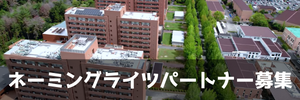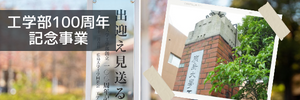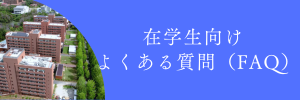(English announcement can be found in the latter half of this notice.)
広島大学バイオマスプロジェクト研究センターと中国地域バイオマス利用研究会の共催で広島大学バイオマスイブニングセミナーを開催しています。バイオマスに関する基本的な考え方から最先端の情報までをカバーして、この地域におけるバイオマスの活動に資することを目的とするものです。第79回を以下の日程で開催しますので、ご参集下さい。
日時
2019年11月18日(月)16:20~17:50
会場
広島大学東広島キャンパス工学部110講義室
広島大学 東広島キャンパス
https://www.hiroshima-u.ac.jp/access/higashihiroshimacampus
工学部 建物配置図
www.hiroshima-u.ac.jp/eng/access/building
工学部 講義室配置図
www.hiroshima-u.ac.jp/eng/access/lectureroom
プログラム
解説 広島大学大学院工学研究科 教授 松村幸彦
講演 広島大学大学院工学研究科 外国人客員研究員 Noah Luciano TAUFER
「肥料の水熱炭化と液体生成物の超臨界水ガス化に関する実験的調査」
現在、世界的に再生可能エネルギーを発見し活用するニーズが高まっています。気候変動は世界的に直面している解決すべき問題です。この理由からバイオマス、風力、水力はエネルギー市場において大切な足がかりとなっており、大衆の合意や国からの助成金を得られています。このうち、バイオマスは一番広く広まっているだけでなくすでに石炭、石油、天然ガスに次ぐ4番目に使用されているエネルギー源です。しかしながら、古典的な熱化学処理によって必ずしも有効に活用されるとも限りません。実際、多くのバイオマスは高含水率であるため、適切な方法で処理する必要があります。水熱処理は含水性バイオマスを処理するのに一番効果的な解決策です。この研究では高含水率という特徴を持つ牛糞肥料の嫌気性消化残渣に対する水熱炭化(HTC)の効果を明らかにしました。水熱炭化は温度180、220、250 ˚C、滞留時間3 h、自生圧力下で行われました。主要生成物であるハイドロチャー(固体)や液体サンプルは抽出、分析をしました。また、廃棄物を最小にするためと水素を豊富に含む有用なガス生成をするために、次のステップとして液相の超臨界水ガス化を行ないました。この処理には連続式流通反応器を使用し、温度600、550、500 ˚Cで滞留時間は最適滞留時間を確認するため、変化させて行ないました。この実験で得られた固体、液体、ガスサンプルについて回収し分析を行ないました。
講演 広島大学大学院工学研究科 M2 横山 裕生
「微小時間でのグリシンの超臨界水ガス化における窒素挙動」
超臨界水ガス化はバイオマスを素早く、ほぼ完全に変換することができるため注目されています。亜臨界状態でのアミノ酸の分解についての報告はいくつかあり、イオン反応が主に起こっているとの見解が得られています。その一方で、超臨界水ガス化によるグリシンの分解はそのほとんどが5 s以内に行われるにも関わらず、これまでに5 s以内で実験が行われた報告はありません。そのため、私たちは5 s以内でのグリシンの超臨界水ガス化実験を行いました。実験は管式流通反応器で25 MPaで行い、グリシンをタンパク質のモデル物質として使用しました。
講演 広島大学大学院工学研究科 D3 Rahmat Iman MAINIL
「パーム油工場廃水の超臨界水ガス化に及ぼす加熱速度の影響」
パーム油工場廃水(POME)は、パーム油生産からの問題のある廃棄物です。適切な管理が行われないと、深刻な汚染を引き起こす可能性があります。バイオマス廃棄物をエネルギー源として利用するために採用されているいくつかの技術の中で、超臨界水ガス化(SCWG)が最も有望な候補です。 SCWGは、高温の圧縮水でバイオマスをガス化する技術です。ガス化は迅速であり、高い炭素ガス化効率(CGE)を達成できます。 CGEは、原料の加熱速度の影響を受けることが知られています。ただし、POMEの変換に対する加熱速度の影響はまだ理解されていません。この効果を研究するために、POMEを600°Cの一定温度で25 MPaの制御された圧力の連続フロー反応器で処理し、さまざまな予熱器長(1、2、4 m)で処理しました。結果を比較することにより、CGEおよびリン転化率に対する加熱速度の影響が明らかになりました。
講演 広島大学大学院工学研究科 D3 Puji Rahmawati NURCAHYANI
「微細藻類Chlorella vulgarisのリン消費とバイオマス生産性に対する栄養濃度の影響」
微細藻類は、陸上植物に比べて速く成長する光合成バイオマスです。成長期には、これらの緑藻は窒素、リン、カリウムを主成分とする栄養素を必要とします。しかし、これらの栄養素の消費行動はよく報告されていません。そのため、この実験では、バイオマスを成長させるための緑藻類Chlorella vulgarisのリンの取り込みを調査するよう設定しました。培養は、900 mlの容量のバッチ式反応器で行いました。室温は20˚Cに制御され、通気は3 ml / minの流量でリアクターに供給され、光強度は24時間の光周期で3.42 µmoles / m2 / sでした。使用した培地濃度は、10、50、100、200、および500 ppmでした。培養期間中、微細藻類のサンプルは3日ごとに1回採取され、40日目に停止されました。サンプルあたりの細胞重量を分析しました。それ以外は、モリブデンブルー法を用いて培地中のリン含有量を分析しました。その結果、100 ppmの栄養濃度で最大のバイオマス生産性が得られましたが、この濃度でのリンの消費は他の濃度よりも速くなりました。さらに、高濃度のリンを使用すると、微細藻類細胞の成長が阻害される可能性があります。
司会 広島大学大学院工学研究科 教授 松村 幸彦
なお、18:00より意見交換会(参加費 800円)を開催します。ご都合の付く方はこちらにもご参加下さい。
The 79th Hiroshima University Biomass Evening Seminar
(The 59th Hiroshima University ACE Seminar)
Biomass Project Research Center, Hiroshima University, and HOSTY Association are co-organizing the Hiroshima University Biomass Evening Seminar. This seminar covers topics from the fundamentals of biomass to the latest information so that it can contribute the activities on biomass in this district. The 79th seminar will be held as follows. Please join.
Date & Time
Mon.18 Nov., 2019 16:20-17:50
Place
Engineering 110 Lecture Room, Higashi-Hiroshima Campus, Hiroshima University
Higashi Hiroshima Campus, Hiroshima University
https://www.hiroshima-u.ac.jp/en/access/higashihiroshimacampus
School of Engineering Buildiing map
https://www.hiroshima-u.ac.jp/en/access/higashihiroshimacampus/aca_7
School of Engineering Lecture room map
www.hiroshima-u.ac.jp/eng/access/lectureroom
Program
Commentary: Yukihiko MATSUMURA
Professor, Graduate School of Engineering, Hiroshima University
Lecture: Noah Luciano TAUFER
Visiting Research Scholar, Graduate School of Engineering, Hiroshima University
“Experimental Investigation into the Hydrothermal Carbonization of digestate and the Supercritical Water Gasification of the liquid product”
In the modern world, there is an ever growing need to find and exploit renewable energy sources. Climate change is a world-wide problem that must be confronted and solved. For this reason, renewable energies like biomass, solar, wind and hydropower have taken a strong foothold in the energy market, thanks to large public consensus and government subsidies. Among these, biomass is the most widespread and it is already the fourth largest energy source after coal, oil and natural gas. However, it is not always efficiently exploited through classical thermo-chemical treatments. In fact, a lot of biomass features high moisture content and must be treated with appropriate methods. Hydrothermal treatments are the most effective solution to treat wet biomass. This study investigates the ability of HTC to treat the solid residue of anaerobic digestion of cattle manure, which features very high-water content. Hydrothermal carbonization is performed at 180, 220, 250 °C for residence times of 3 hours under autogenous pressure. The main products, hydrochar (solid) and process liquid, are extracted and analysed. The next step consists in performing Supercritical Water Gasification of the process liquid, minimizing the wastes and producing a valuable gaseous energy vector rich of hydrogen. For this, a continuous flow reactor is used, and the HTC liquid is gasified at 600, 550 and 500 °C and at varying residence times in order to identify the ideal operating parameters. Finally, the solid, liquid and gaseous products are collected and analysed.
Lecture: Hiroki YOKOYAMA
M2 Student, Graduate School of Engineering, Hiroshima University
“Nitrogen Behavior in Supercritical Water Gasification of Glycine at the Initial Stage”
Supercritical water gasification(SCWG) is attracting attention because SCWG can convert biomass quickly, and almost completely. There are some studies about amino acid decomposition under subcritical condition, and they reported that ionic reaction mainly occurred under subcritical condition. On the other hand, it is well known that ion product dramatically decreases under supercritical condition. Discussion about behavior of nitrogen in SCWG in less than 5 s is insufficient though almost all nitrogen reactions are completed in less than 5 s. Therefore, we conducted SCWG of glycine in less than 5 s. The experiment was conducted using a tubular flow reactor at 25 MPa and glycine was used as a model compound of protein of biomass.
Lecture: Rahmat Iman MAINIL
D3 Student, Graduate School of Engineering, Hiroshima University
“Effect of Heating Rate on Supercritical Water Gasification of Palm Oil Mill Effluent”
Palm oil mill effluent (POME) is a problematic waste from palm oil production. It could cause severe pollution if no appropriate management is carried out. Among several technologies employed to utilize biomass waste as a source of energy, supercritical water gasification (SCWG) is the most promising candidate. SCWG is a technology to gasify biomass in hot compress water. The gasification is quick, and high carbon gasification efficiency (CGE) can be achieved. The CGE is known to be affected by the feedstock heating rate. However, the effect of heating rate on the conversion of POME has not understood yet. To study this effect, we treated POME in a continuous flow reactor at a constant temperature of 600 °C and controlled pressure 25 MPa with various preheater length (1,2, and 4 m). By comparing the results, effect of heating rate on the CGE and the phosphorus conversion was made clear.
Lecture: Puji Rahmawati NURCAHYANI
D3 Student, Graduate School of Engineering, Hiroshima University
“Influence of nutrient concentration on the phosphorus consumption and biomass productivity of microalgae Chlorella vulgaris.”
Microalgae are a photosynthetic biomass which grow faster compared to the land plant. In the growing period, these green algae need some nutrient with main composition of nitrogen, phosphorus and potassium. However, the consumption behavior of those nutrient has not been reported well. Therefore, we set this experiment to investigate the green microalgae Chlorella vulgaris in uptake of phosphorus for growing their biomass. The cultivation was set in batch reactor with volume of 900 ml. Room temperature was controlled for 20˚C, aeration was fed into the reactor with flowrate of 3 ml/min and the light intensity was 3.42 µmoles/m2/s with 24 h photoperiod. The medium concentration used was 10, 50, 100, 200 and 500 ppm. During cultivation period, microalgae sample were taken once in every 3 days and stopped in day 40th. We analyzed the cell weight of per ml sample. Other than that, we analyzed the phosphorus content in the medium using molybdenum blue method. As a result, the maximum biomass productivity was obtained in nutrient concentration of 100 ppm, while the consumption of phosphorus rate on this concentration was faster than that of the others. Furthermore, the use of higher concentration of phosphorus might inhibits the growth of microalgae cells.
Chair: Yukihiko MATSUMURA
Professor, Graduate School of Engineering, Hiroshima University
We will hold the discussion meeting from 18:00 (800 JPY needed). Join this meeting, too if you are available.


 Home
Home









